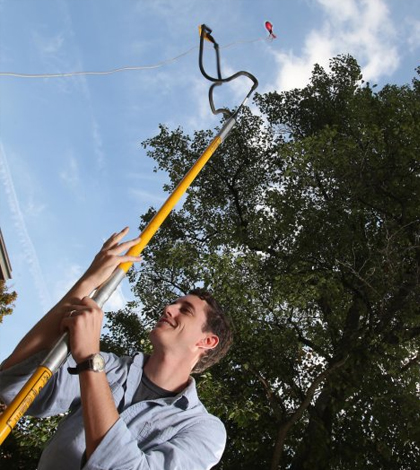Acclimation Of Plants Key To Improving Climate Change Models

Purdue students are hoping to improve climate change models by collecting leaf samples. (Credit: Tom Campbell / Purdue University)
Of the many pieces that comprise climate change models, plant photosynthesis and respiration have been two of the more uncertain components in the past. Photosynthesis and respiration equations typically reflected short-term temperature changes, but not long-term ones.
Over time, their relative rates change as plants acclimate to higher long-term temperatures, but models failed to incorporate the acclimation, leading to inaccuracies. However, according to a release from Purdue University, scientists have successfully incorporated acclimation into their climate change models, leading to a 36 percent improvement in modeling accuracy of tropical carbon flux.
The Earth System Models used in the study simulated the global climate by combining many atmosphere, ocean, land and ice sub-models. Adding equations describing acclimation changes to plants due to higher temperatures and running simulations of 15 temperate and tropical forest sites around the world yielded carbon exchange results that closely matched historical data. Temperate forest carbon flux models, however, did not show significant improvement when the acclimation piece was added.
Top image: Purdue students are hoping to improve climate change models by collecting leaf samples. (Credit: Tom Campbell / Purdue University)




0 comments